If you’re a fish enthusiast, you know that goldfish are a popular choice for beginners and experts alike. They are low-maintenance, hardy, and come in a variety of colors and patterns. However, caring for goldfish is not as simple as just putting them in a bowl and feeding them occasionally. Proper care is essential for their health and longevity.
Goldfish require a clean and spacious tank, proper water temperature and chemistry, and a varied diet with high-quality food. Avoid overfeeding and provide hiding places. Monitor for signs of illness such as lethargy or abnormal swimming behavior. Consult with a veterinarian or experienced aquarist for advice on proper care.
As a proud owner of several goldfish, I have learned firsthand the importance of providing the right environment, nutrition, and attention to these aquatic pets. In this article, we will cover everything you need to know about goldfish care, from setting up the perfect tank to feeding and cleaning. Whether you’re a new goldfish owner or looking to improve your existing setup, this guide will provide you with the necessary information to keep your fish happy and healthy.
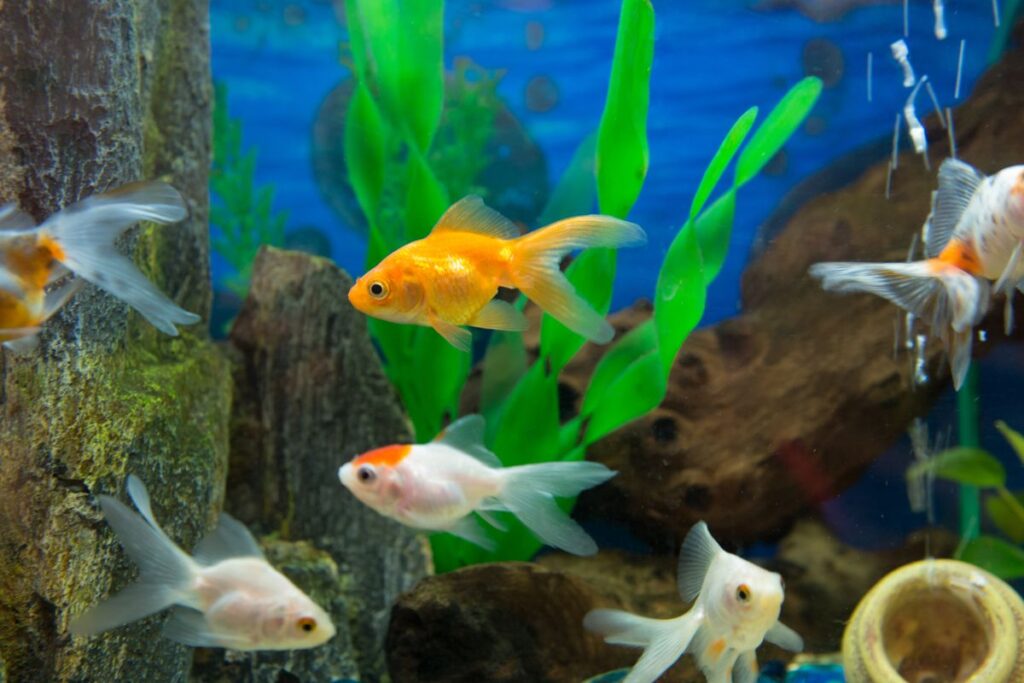
Table of Contents
Key Takeaways
- Goldfish need a tank that is at least 20 gallons in size.
- Maintain a proper filtration system to keep the water clean and healthy for your goldfish.
- Feed your goldfish a balanced diet of high-quality flakes or pellets, and avoid overfeeding.
- Keep the water temperature between 65-75°F for optimal goldfish health.
- Monitor the water quality regularly, and perform partial water changes every week to maintain good water quality.
- Provide hiding places and decorations in the tank to create a stimulating environment for your goldfish.
- Avoid overcrowding the tank and keep only compatible fish species together.
- Observe your goldfish daily for any signs of illness or abnormal behavior, and seek veterinary care if necessary.
- Handle your goldfish with care and avoid sudden movements or changes in their environment.
- Goldfish can live up to 20 years with proper care, so be prepared for a long-term commitment.
Species Summary
Origin
Goldfish, also known as Carassius auratus, are a species of freshwater fish that originated in China over 1,000 years ago.
They were originally bred for their ornamental value in outdoor ponds and were later introduced to indoor aquariums.
Appearance
Goldfish come in a variety of colors and patterns, including red, orange, white, black, and calico. They have a distinctive body shape with a rounded belly and a forked tail.
They also have a pair of barbels on their upper jaw that help them locate food.
Lifespan
| Goldfish Type | Lifespan |
|---|---|
| Common goldfish | 10-20 years |
| Fancy goldfish | 10-20 years |
| Shubunkin goldfish | 10-20 years |
| Comet goldfish | 10-20 years |
Goldfish can live for up to 20 years with proper care.
However, their lifespan can be significantly shortened if they are kept in poor conditions or if they are not provided with adequate nutrition.
Size
Goldfish can grow up to 12 inches in length, depending on the species.
However, most pet goldfish will only grow to be 6-8 inches in length.
Growth rate
Goldfish are relatively slow-growing fish and can take up to 2-3 years to reach their full size.
However, their growth rate can be accelerated with the right diet and environmental conditions.
Behavior & Temperament
Goldfish are generally peaceful and social fish that can be kept with other goldfish or other peaceful species. They are active swimmers and enjoy having plenty of space to explore.
However, they can become aggressive towards each other if they are overcrowded or if there is not enough space in the tank.
Personally, I remember getting my first goldfish when I was a child. It was a small, orange fish that I named Goldie.
I loved watching Goldie swim around in her tank and would often spend hours just watching her.
Although Goldie didn’t live as long as she could have due to my lack of knowledge about proper care, she sparked my love for goldfish and aquatic pets.
Types of Goldfish
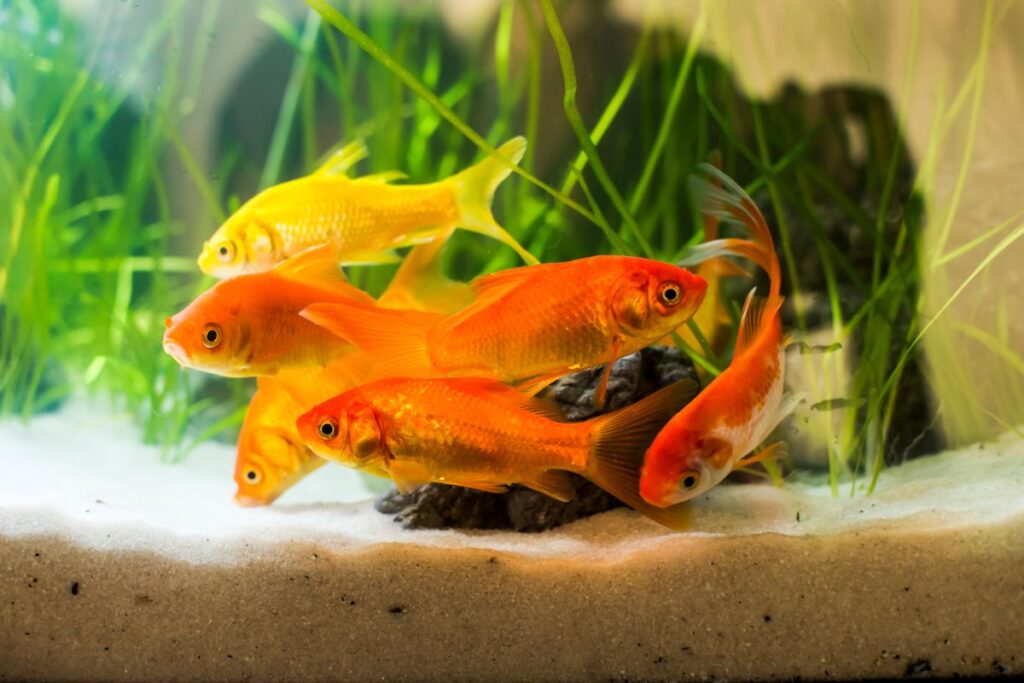
When it comes to goldfish, there are many different types to choose from. Each type has its own unique characteristics, which make them a great addition to any aquarium.
Here are some of the most popular types of goldfish:
- Common Goldfish: This is the most well-known type of goldfish. They have a long, slender body and come in a variety of colors. They are easy to care for and can grow up to a foot in length.
- Comet Goldfish: Comet goldfish are similar to common goldfish, but they have a longer tail. They are also very hardy and can tolerate a wide range of water conditions.
- Shubunkin Goldfish: These goldfish have a unique color pattern, with blue, orange, and black spots. They are very active and can grow up to 18 inches in length.
- Fantail Goldfish: Fantail goldfish have a short, round body and a double tail. They are very popular because of their unique appearance and are often kept in outdoor ponds.
Personally, I have always been drawn to the Shubunkin Goldfish. I find their color pattern to be absolutely stunning and they are always so active and playful in the aquarium.
However, no matter which type of goldfish you choose, it is important to provide them with a clean and healthy environment to thrive in.
Choosing the Right Tank
When it comes to selecting the perfect home for your goldfish, there are a few things to consider.
A good place to start is by choosing the right tank, which involves considering the size and shape of the tank.
Size of the Tank
Goldfish can grow quite large, so it’s important to choose a tank that can accommodate their size. As a general rule of thumb, you should have at least 20 gallons of water for one goldfish.
If you plan to keep more than one goldfish, you’ll need to increase the size of the tank accordingly.
Keep in mind that goldfish produce a lot of waste, so a larger tank will help keep the water clean and healthy for your fish.
When I first got my goldfish, I made the mistake of putting them in a small tank. They quickly outgrew the tank, which led to health problems and a lot of frustration.
After doing some research, I learned that a larger tank was necessary to keep my goldfish healthy and happy.
Shape of the Tank
| Tank Size | Number of Goldfish | Water Volume | Water Change Frequency |
|---|---|---|---|
| 20 gallons | 1-2 | 20 gallons | 25% every week |
| 30 gallons | 2-3 | 30 gallons | 25% every week |
| 40 gallons | 3-4 | 40 gallons | 25% every week |
| 50 gallons | 4-5 | 50 gallons | 25% every week |
The shape of the tank is also important to consider. Goldfish are active swimmers and need plenty of space to move around.
A long, rectangular tank is the best option, as it provides ample swimming space and allows for good water circulation.
Avoid tall, narrow tanks, as they don’t provide enough swimming space and can lead to stagnant water.
Another thing to consider is the placement of the tank. Goldfish prefer cooler water temperatures, so it’s best to keep the tank away from direct sunlight and heat sources. A well-lit area is ideal, as goldfish need light to thrive.
By choosing the right tank for your goldfish, you’ll be setting them up for a happy and healthy life. Remember to consider the size and shape of the tank, and to keep the tank in a well-lit, cool area. Your goldfish will thank you for it!
Setting up the Tank
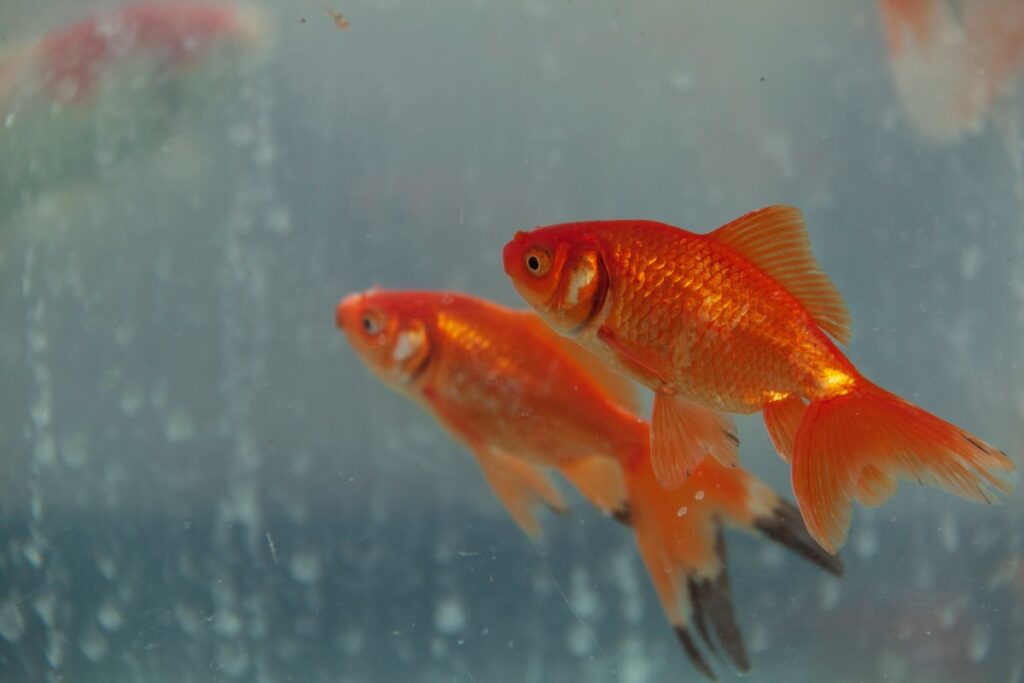
When it comes to setting up a tank for your goldfish, there are several factors to consider. Here are some things to keep in mind:
Lighting
Goldfish require a consistent light source to thrive. A timer can help regulate the amount of light your fish receive each day. Be sure to avoid placing the tank in direct sunlight, as this can cause algae growth and temperature fluctuations.
Filtration System
A good filtration system is essential for maintaining a healthy environment for your goldfish.
Look for a filter that can handle at least twice the amount of water in your tank. Be sure to clean or replace the filter regularly to ensure it’s working effectively.
The best filter for a goldfish tank depends on the size of the tank, the number of goldfish, and the type of goldfish you have.
However, generally speaking, a filter that provides both mechanical and biological filtration is recommended for goldfish tanks.
A canister filter is a popular choice for goldfish tanks as it provides both types of filtration and is efficient in removing waste products and debris from the water. Canister filters are also easy to maintain and clean.
Another good option is a hang-on-back filter, which is easy to install and maintain.
Hang-on-back filters provide both mechanical and biological filtration and are suitable for smaller goldfish tanks.
Sponge filters are another option for goldfish tanks, especially for smaller tanks or for use as a secondary filter.
Sponge filters provide biological filtration and are gentle on goldfish, making them a good choice for tanks with delicate or young goldfish.
Ultimately, the best filter for a goldfish tank is one that is appropriate for the size of the tank, provides both mechanical and biological filtration, and is easy to maintain and clean.
Aeration
Goldfish require oxygen-rich water to survive. An air pump and air stone can help increase oxygen levels in the tank. Be sure to avoid creating too much turbulence in the water, as this can stress out your fish.
Heater and Thermometer
Goldfish prefer water temperatures between 65-75°F. A heater and thermometer can help regulate the water temperature and ensure it stays within this range.
Be sure to monitor the temperature regularly to ensure it stays consistent.
Substrate
A layer of substrate on the bottom of the tank can help create a more natural environment for your goldfish.
Gravel or sand are good options, but be sure to avoid anything too small that could be ingested by your fish.
Decoration
| Decoration Type | Benefits |
|---|---|
| Plants | Provide oxygen and hiding places |
| Rocks and caves | Provide hiding places and a stimulating environment |
| Gravel or sand | Provide a natural substrate for the tank |
Adding decorations to the tank can provide your goldfish with places to hide and explore.
Be sure to avoid anything with sharp edges or small parts that could be ingested by your fish.
Plants
Live plants can help improve water quality and provide your goldfish with a natural food source. Be sure to choose plants that are safe for your fish and won’t require too much maintenance.
I’ve found that setting up a tank for my goldfish can be a fun and rewarding experience. By following these tips, you can create a healthy and stimulating environment for your fish to thrive in.
Water Quality
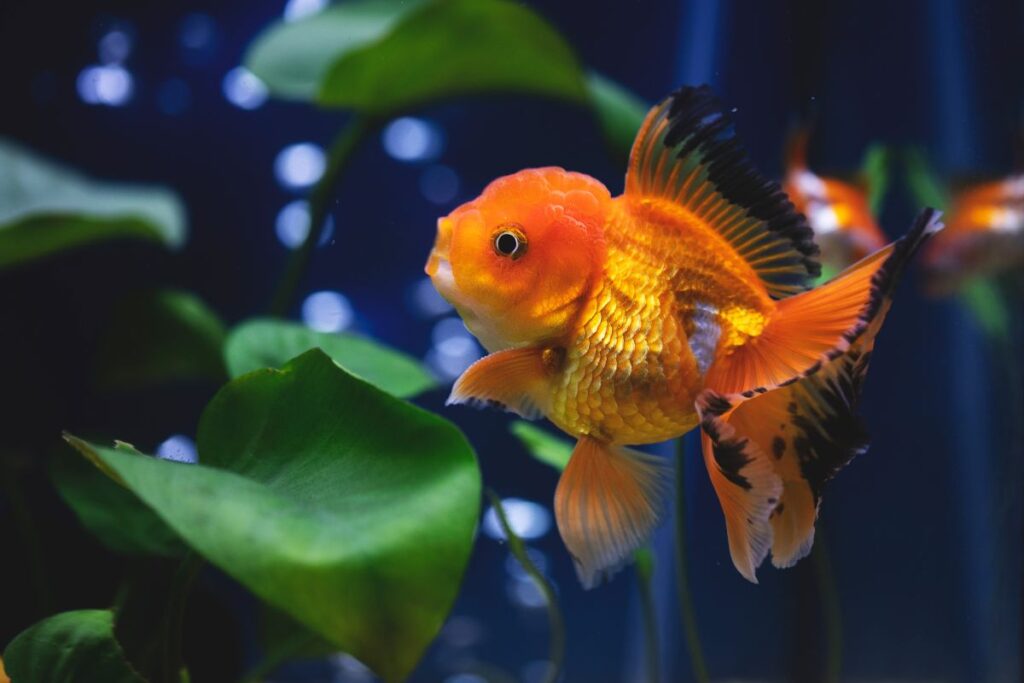
As a goldfish owner, it is crucial to maintain the water quality in the tank to keep your fish healthy and happy.
Water quality is determined by various factors, including water temperature, pH level, and water hardness. In this section, we will discuss each of these factors in detail.
Water Temperature
The ideal water temperature for goldfish is between 68°F and 74°F. Anything below or above this range can cause stress and health problems for your fish.
I learned this the hard way when I first got my goldfish and didn’t realize the importance of maintaining the proper water temperature.
My fish became lethargic and stopped eating, and I had to rush to fix the issue. Since then, I’ve made it a priority to check the water temperature regularly and make adjustments as needed.
Water pH
Goldfish thrive in a pH range of 7.0 to 7.8. If the pH level is too high or too low, it can cause stress and health issues for your fish.
I’ve found that using a pH testing kit is an easy way to monitor the pH level in the tank. If the pH level is outside the optimal range, I add a pH adjuster to the water to bring it back to the right level.
Water Hardness
Water hardness refers to the amount of dissolved minerals in the water. Goldfish prefer moderately hard water with a range of 150 to 300 ppm.
If the water is too soft or too hard, it can cause health issues for your fish. I use a water hardness testing kit to monitor the water hardness level in the tank.
If the level is outside the optimal range, I add a water conditioner to adjust the hardness level.
Maintaining the proper water quality is essential for the health and well-being of your goldfish.
By monitoring and adjusting the water temperature, pH level, and water hardness, you can ensure that your fish live a long and happy life.
Goldfish Tank Water Change
Keeping your goldfish tank clean is essential to their health and well-being. One of the most important aspects of maintaining a healthy aquarium is performing regular water changes.
As a goldfish owner, I have learned the importance of water changes through my own experience.
I recommend changing 20-30% of the water in your goldfish tank every week.
This will help remove any excess waste, uneaten food, and other harmful substances that can accumulate in the water.
Be sure to use a water conditioner to neutralize any chlorine or chloramines in your tap water before adding it to the tank.
When performing a water change, use a siphon to remove the water from the bottom of the tank. This will help remove any debris that has settled on the bottom.
Be sure to also clean the filter media and any decorations in the tank to remove any excess waste and debris.
If you notice any signs of illness or stress in your goldfish, such as lethargy or loss of appetite, it may be necessary to perform more frequent water changes.
Additionally, if you have a heavily stocked tank or a larger goldfish, you may need to perform more frequent water changes to maintain good water quality.
Remember, maintaining a clean and healthy environment for your goldfish is crucial to their overall health and well-being.
By performing regular water changes and keeping up with tank maintenance, you can help ensure that your goldfish live long and healthy lives.
Tank Mates
| Fish Species | Compatibility |
|---|---|
| Corydoras | Compatible with goldfish |
| Plecos | Compatible with goldfish |
| White Cloud Mountain Minnows | Compatible with goldfish |
| Zebra Danios | Compatible with goldfish |
One of the best things about owning a goldfish is that they can coexist with other fish species.
However, it’s important to choose the right tank mates to ensure that your goldfish live a happy and healthy life. Here are some tips on choosing the right tank mates for your goldfish:
Firstly, it’s important to consider the size of your goldfish and the size of the other fish species you want to add to the tank.
Goldfish can grow quite large, so it’s important to choose tank mates that won’t be intimidated or bullied by them. Some good tank mates for goldfish include guppies, platies, and neon tetras.
Another important factor to consider is the temperament of the other fish species. Goldfish can be quite docile, so it’s important to choose tank mates that won’t be too aggressive or territorial.
Avoid adding fish species that are known to nip at fins or that require a lot of space to swim around.
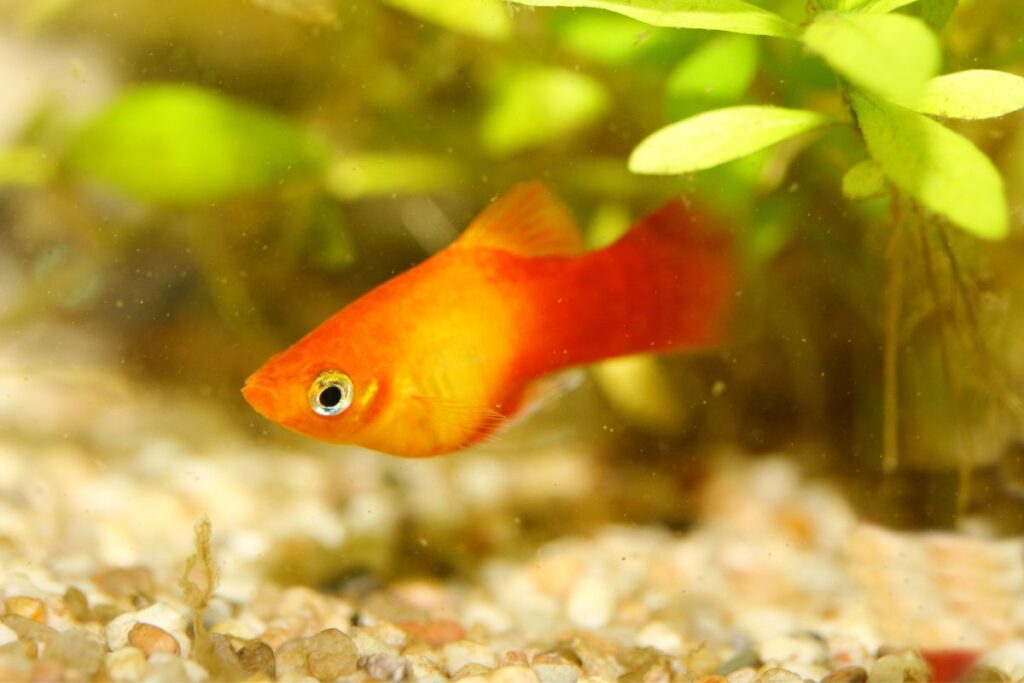
Finally, it’s important to consider the water conditions in your tank. Goldfish prefer cooler water temperatures than most other tropical fish species, so it’s important to choose tank mates that can thrive in cooler water. Some good options include white cloud minnows and zebra danios.
Personally, I have had success keeping my goldfish with guppies and neon tetras. They all get along well and add a lot of color and activity to the tank.
Just remember to choose tank mates that are compatible with your goldfish and that can thrive in your tank’s water conditions.
Feeding and Nutrition
Types of Food
Goldfish are omnivores, which means they eat both plants and animals.
You can feed them a variety of foods including flakes, pellets, frozen or live food. It is important to choose a high-quality food that is specifically made for goldfish. Avoid feeding them human food or food that is not meant for fish.
I personally like to feed my goldfish a mix of pellets and frozen brine shrimp.
The pellets provide them with essential nutrients and the brine shrimp is a great source of protein.
Feeding Schedule
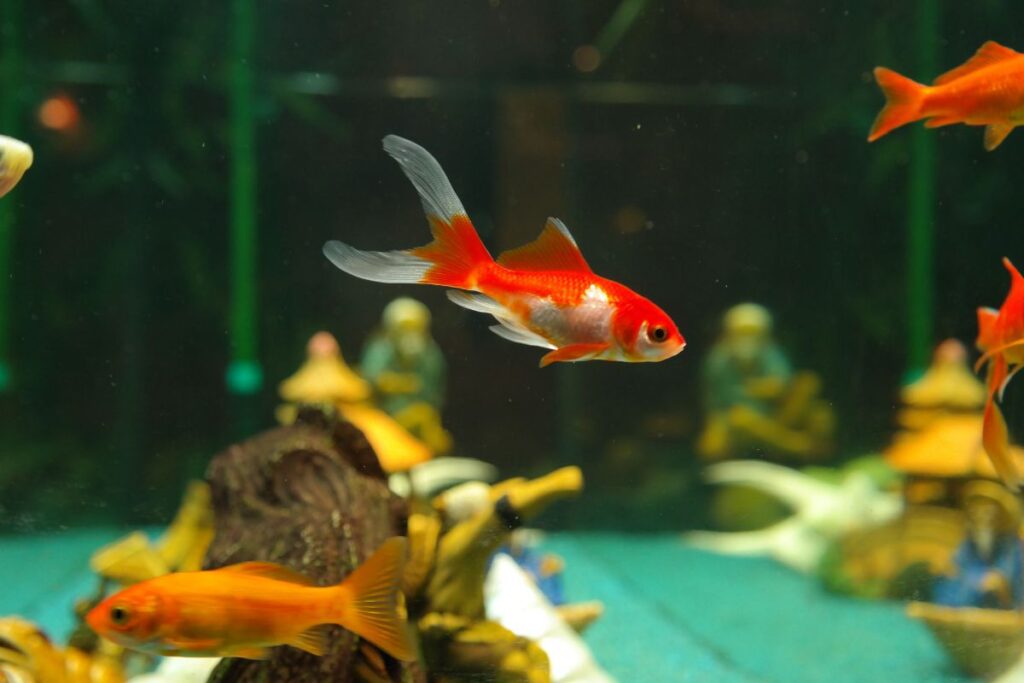
It is recommended to feed your goldfish once or twice a day, but be careful not to overfeed them.
Overfeeding can lead to health problems such as swim bladder disease and obesity. Goldfish have a small stomach, so it is best to feed them small amounts at a time.
I usually feed my goldfish once a day in the morning. I give them a small pinch of food and wait a few minutes to see if they finish it.
If they do, I give them a little more. If they don’t, I remove the uneaten food to prevent it from polluting the water.
Feeding Tips
- Do not feed your goldfish more than they can eat in 2-3 minutes.
- Remove any uneaten food to prevent it from polluting the water.
- Alternate between different types of food to provide them with a balanced diet.
- Feed your goldfish at the same time every day to establish a routine.
- Monitor your goldfish’s weight and adjust their feeding accordingly.
Feeding your goldfish the right type of food and in the right amount is crucial for their health and wellbeing. By following these feeding tips, you can ensure that your goldfish stay healthy and happy.
How Many Goldfish Should Be Kept Together?
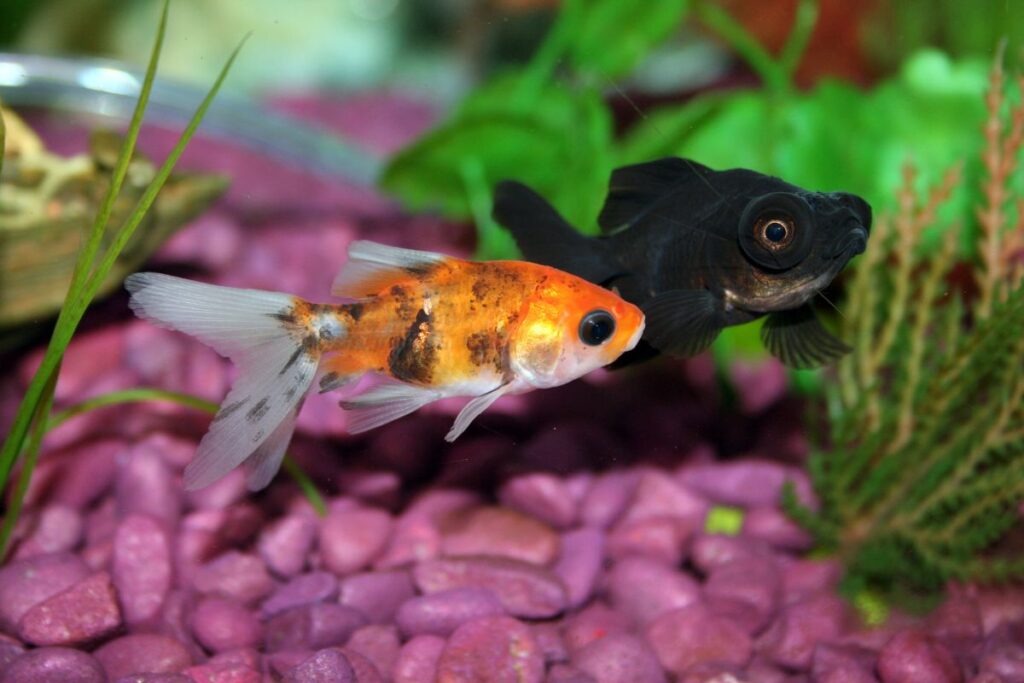
When it comes to keeping goldfish, one of the most important factors to consider is the number of fish that should be kept in the same tank.
As a general rule of thumb, it is recommended to keep one goldfish per 20 gallons of water. This means that if you have a 40-gallon tank, you can keep up to two goldfish.
However, it is important to note that this is just a guideline and there are other factors that can affect the number of fish you should keep in your tank.
One of the factors to consider is the size of the goldfish. If you have larger goldfish, they will require more space than smaller ones.
Additionally, if you have a heavily planted tank, you may be able to keep more goldfish than if you have a tank with little to no plants.
Another factor to consider is the type of goldfish you have. Some types of goldfish, such as the common goldfish, can grow quite large and require more space than other types, such as the fancy goldfish.
If you have a mix of different types of goldfish, it is important to take their individual needs into account when determining how many fish to keep in your tank.
It is also important to consider the filtration system in your tank. Goldfish produce a lot of waste, so it is important to have a powerful filtration system that can keep up with the demands of your fish.
If you have a larger number of goldfish in your tank, you may need to upgrade your filtration system to ensure that the water remains clean and healthy for your fish.
Personally, I have a 30-gallon tank with two fancy goldfish. I find that this is the perfect number of fish for my tank size and filtration system.
I also make sure to keep up with regular water changes and monitor the water parameters to ensure that my fish are healthy and happy.
Health and Disease
As a goldfish owner, it’s important to keep an eye on your fish’s health. While goldfish are generally hardy and easy to care for, they can still fall ill.
In this section, we’ll cover some common goldfish diseases and preventive measures you can take to keep your fish healthy.
Common Diseases

Goldfish are susceptible to a variety of diseases, including:
- Ich: A parasitic infection that causes white spots on the fish’s body.
- Fin rot: A bacterial infection that causes the fins to deteriorate.
- Dropsy: A bacterial infection that causes the fish to become bloated and develop raised scales.
If you notice any of these symptoms in your goldfish, it’s important to take action right away. Quarantine the affected fish and treat them with medication as directed.
Preventive Measures
The best way to keep your goldfish healthy is to prevent diseases from occurring in the first place. Here are some tips:
- Maintain good water quality: Goldfish produce a lot of waste, so it’s important to keep their tank clean. Do regular water changes and use a high-quality filter.
- Feed a balanced diet: Goldfish need a varied diet that includes both pellets and live or frozen foods.
- Quarantine new fish: If you’re adding new fish to your tank, quarantine them for at least two weeks to make sure they’re healthy and disease-free.
I learned the importance of good water quality the hard way. When I first got my goldfish, I didn’t realize how quickly the water could become polluted. I didn’t do regular water changes, and I didn’t have a good filter.
As a result, my fish became sick and I had to take them to the vet. Now, I make sure to keep the tank clean and do regular water changes, and my fish have been healthy ever since.
Signs of a Healthy Goldfish
As a goldfish owner, it is important to be able to recognize the signs of a healthy fish. Here are some key indicators to look out for:
- Clear eyes: A healthy goldfish should have clear, bright eyes without any cloudiness or discoloration.
- Smooth scales: The fish’s scales should be smooth and shiny, without any signs of damage or discoloration.
- Active behavior: A healthy goldfish will be active and swim around the tank, showing curiosity and interest in its surroundings.
- Good appetite: A healthy fish will have a good appetite and eagerly eat its food.
- Clean fins: The fish’s fins should be clean and intact, without any signs of fraying or damage.
- Strong breathing: The fish should be breathing easily and steadily, without any signs of labored breathing or gasping for air.
It is important to note that these are just general guidelines, and that some goldfish may exhibit slightly different behaviors or physical characteristics.
However, if you notice any significant changes in your fish’s behavior or appearance, it may be a sign of illness or disease, and you should consult a veterinarian or experienced fish keeper for advice.
Personally, I have found that observing my goldfish on a daily basis has helped me to better understand their individual personalities and behaviors.
By paying close attention to their habits and movements, I am able to quickly notice any changes or abnormalities, and take action to address them before they become more serious issues.
Signs of a Sick Goldfish
| Symptom | Possible Cause |
|---|---|
| Lethargy | Poor water quality, disease |
| Loss of appetite | Poor water quality, disease |
| White spots on body | Ich or other parasitic infection |
| Red or inflamed gills | Bacterial or fungal infection |
| Cloudy eyes | Bacterial or fungal infection |
As a goldfish owner, it is important to be able to recognize the signs of a sick fish. Here are a few things to look out for:
- Loss of appetite: If your goldfish is not eating or showing any interest in food, it may be a sign of illness.
- Clamped fins: If your goldfish’s fins are held close to its body, it may be a sign of stress or illness.
- Erratic swimming: If your goldfish is swimming frantically or erratically, it may be a sign of a health issue.
- Discoloration: If your goldfish is turning a different color or has spots or patches on its body, it may be a sign of illness.
One personal anecdote I have is when my goldfish, Bubbles, started to show signs of illness. I noticed that he was not as active as usual and was not eating.
Upon closer inspection, I noticed that his fins were clamped and he had some discoloration on his body.
I immediately took him to the vet, who diagnosed him with a bacterial infection. With the help of medication and proper care, Bubbles made a full recovery.
It is important to note that not all signs of illness are visible, so it is crucial to monitor your goldfish’s behavior and overall health regularly.
If you notice any changes or abnormalities, it is best to consult with a veterinarian who specializes in fish care.
Breeding Goldfish
Goldfish breeding can be a rewarding and enjoyable experience for fish enthusiasts.
However, it requires careful planning and preparation to ensure the successful breeding of your goldfish. In this section, we will discuss the breeding setup and process for goldfish.
Breeding Setup
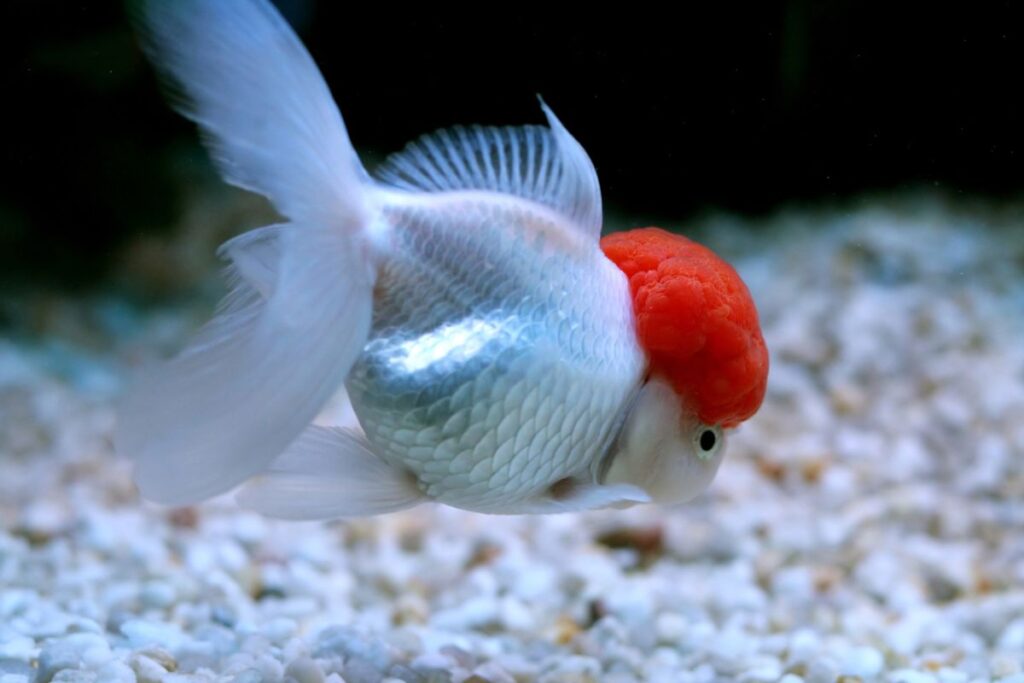
Before you start breeding goldfish, you need to ensure that you have the right setup. This includes a breeding tank, filtration system, and appropriate water conditions.
The breeding tank should be at least 20 gallons and have a sponge filter to prevent the fry from being sucked up.
The water temperature should be between 68-74°F, and the pH should be neutral.
It’s also important to provide hiding places for the fish, such as plants or breeding mops. This will encourage the fish to spawn and provide a safe place for the fry to hide.
Breeding Process
The breeding process for goldfish involves several steps. The first step is to condition the fish by feeding them a high-protein diet and gradually increasing the water temperature. This will stimulate the fish to spawn.
Once the fish are ready to spawn, the male will chase the female around the tank and nudge her abdomen to encourage her to release her eggs.
The male will then fertilize the eggs, and the eggs will stick to the plants or breeding mops.
After spawning, it’s important to remove the adult fish from the breeding tank to prevent them from eating the eggs or fry.
The eggs will hatch in 3-7 days, depending on the water temperature. Once the fry have hatched, they will need to be fed small amounts of food several times a day.
It’s important to monitor the water quality in the breeding tank and perform regular water changes to ensure the health of the fry. As the fry grow, they will need to be separated into larger tanks to prevent overcrowding.
Personally, I found breeding goldfish to be a fun and exciting experience. Watching the fish spawn and the eggs hatch was a truly amazing sight.
However, it’s important to remember that breeding goldfish requires a lot of time and effort, and it’s not for everyone.
Recommended Products:
- NICREW ClassicLED Aquarium Light – This lighting system provides a consistent light source for your goldfish tank and comes with a timer to regulate the amount of light your fish receive each day.
- AquaClear Power Filter – This filtration system is highly recommended for maintaining a healthy environment for your goldfish. It can handle at least twice the amount of water in your tank and is easy to clean or replace the filter regularly to ensure it’s working effectively.
- Tetra Whisper Air Pump – This air pump and air stone can help increase oxygen levels in your goldfish tank, which is essential for their survival. It’s quiet and efficient, and the air stone creates a gentle flow of bubbles that won’t stress out your fish.
- Eheim Jager Aquarium Thermostat Heater – This heater and thermometer can help regulate the water temperature and ensure it stays within the ideal range for your goldfish. It’s easy to use and comes with a built-in thermostat to maintain a consistent temperature.
- CaribSea Eco-Complete Planted Aquarium Substrate – This substrate provides a natural environment for your goldfish and is safe for them to ingest. It’s made of volcanic soil and is rich in minerals and nutrients that can help improve water quality.
- Penn-Plax Aquarium Decoration – This decoration provides your goldfish with places to hide and explore, and it’s made of safe, non-toxic materials that won’t harm your fish.
- Live Aquarium Plants – These live plants can help improve water quality and provide your goldfish with a natural food source. They come in a variety of species and are easy to care for, making them a great addition to your goldfish tank.
- Tetra Goldfish Flakes – This high-quality food is specifically made for goldfish and provides them with essential nutrients. It’s easy to digest and won’t cloud the water in your tank.
Conclusion
After reading this goldfish care guide, you should have a better understanding of what it takes to keep your goldfish healthy and happy. Remember to provide a spacious tank, clean water, and a balanced diet for your goldfish to thrive.
One thing I have learned from my experience with goldfish is that they are sensitive creatures that require attention and care. I used to think that goldfish were easy pets to take care of, but I quickly learned that they are not just simple creatures that you can neglect. They require a lot of attention and care, but the rewards are worth it.
When it comes to goldfish care, there is no one-size-fits-all solution. Every goldfish is unique and has different needs. It’s important to observe your goldfish and adjust their care accordingly. Don’t be afraid to experiment with different foods, decorations, and tank setups to find what works best for your goldfish.
Lastly, remember that owning a goldfish is a long-term commitment. They can live for up to 20 years if properly cared for. So, if you’re thinking about getting a goldfish, make sure you’re ready to commit to providing them with the care they need for their entire life.
FAQs
As a goldfish owner, you may have some questions about how to properly care for your fish. Here are some frequently asked questions:
Q: How often should I feed my goldfish?
A: You should feed your goldfish once or twice a day, but only give them as much food as they can eat in two to three minutes. Overfeeding can lead to health problems such as swim bladder disease.
Q: Can I keep my goldfish in a bowl?
A: While goldfish can survive in a bowl, it is not recommended. Bowls do not provide enough space or filtration for a healthy environment. It is best to keep your goldfish in a properly sized tank with a filter.
Q: Do goldfish need a heater?
A: Goldfish can survive in colder water, but they prefer a temperature between 65 and 72 degrees Fahrenheit. If you live in a colder climate or your home temperature fluctuates, a heater may be necessary to maintain a consistent temperature for your fish.
Q: How often should I clean my goldfish tank?
A: You should do a partial water change once a week and a full tank cleaning once a month. This will help maintain a healthy environment for your goldfish.
Personal Anecdote: When I first got my goldfish, I was unsure about how often to feed them. I ended up overfeeding them, and they developed swim bladder disease. I learned the importance of proper feeding and now only give them as much food as they can eat in a few minutes.
Reference: Wikipedia.
